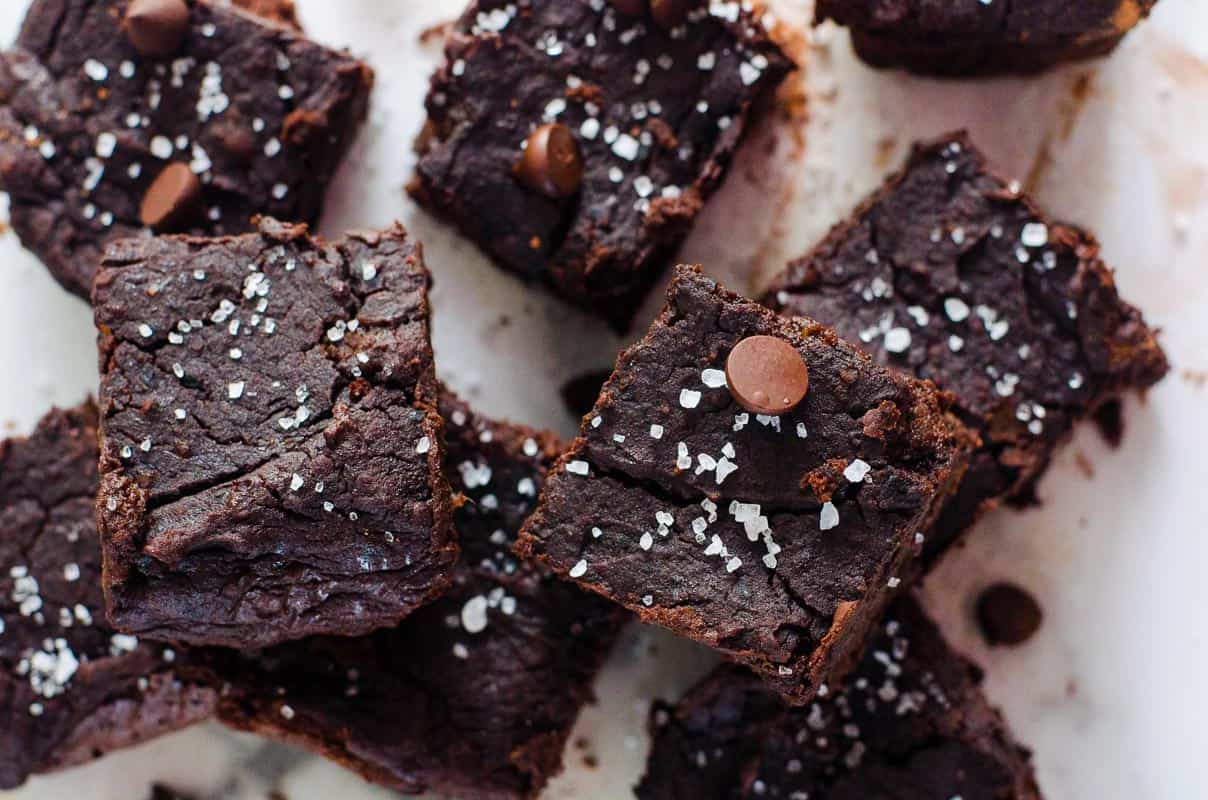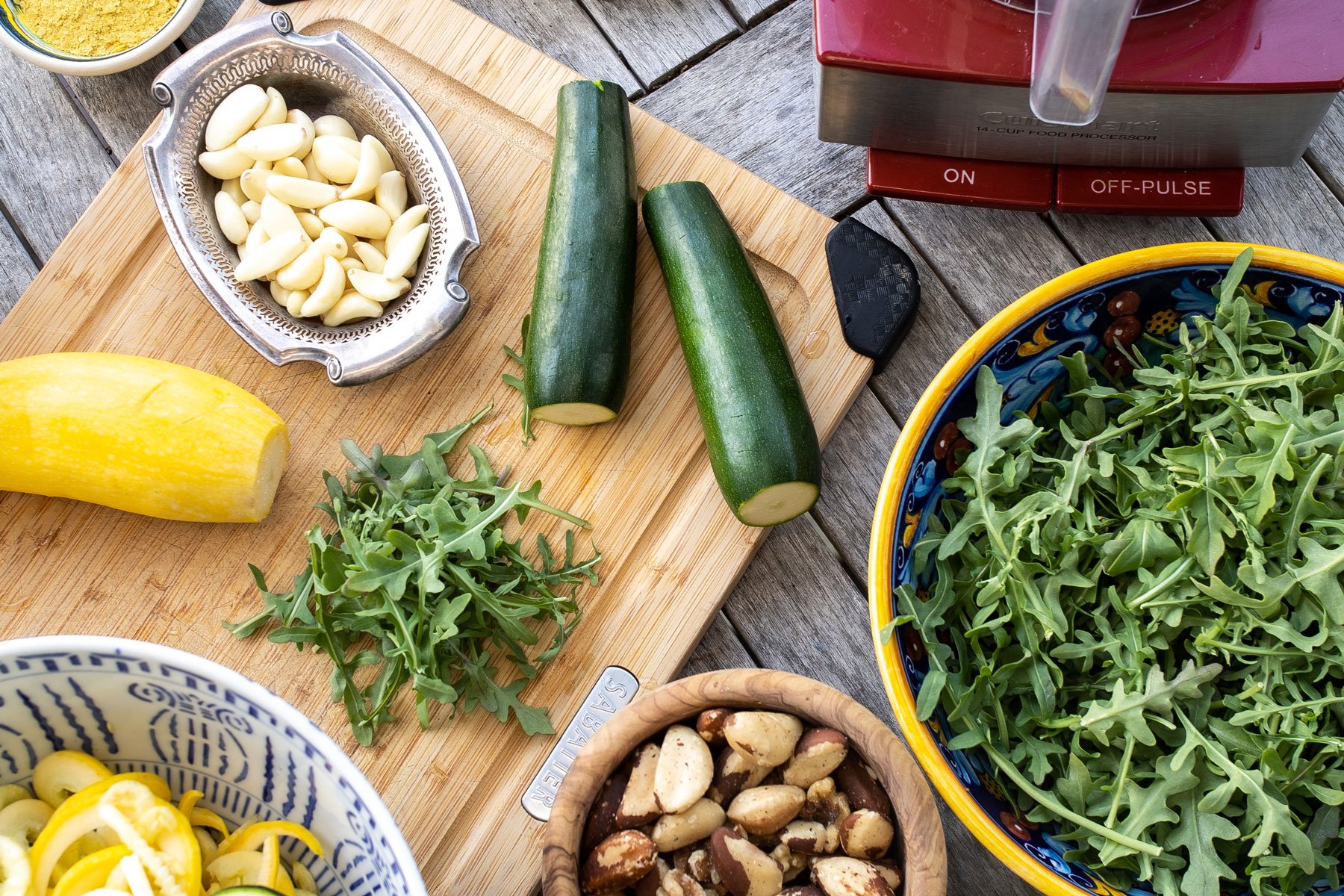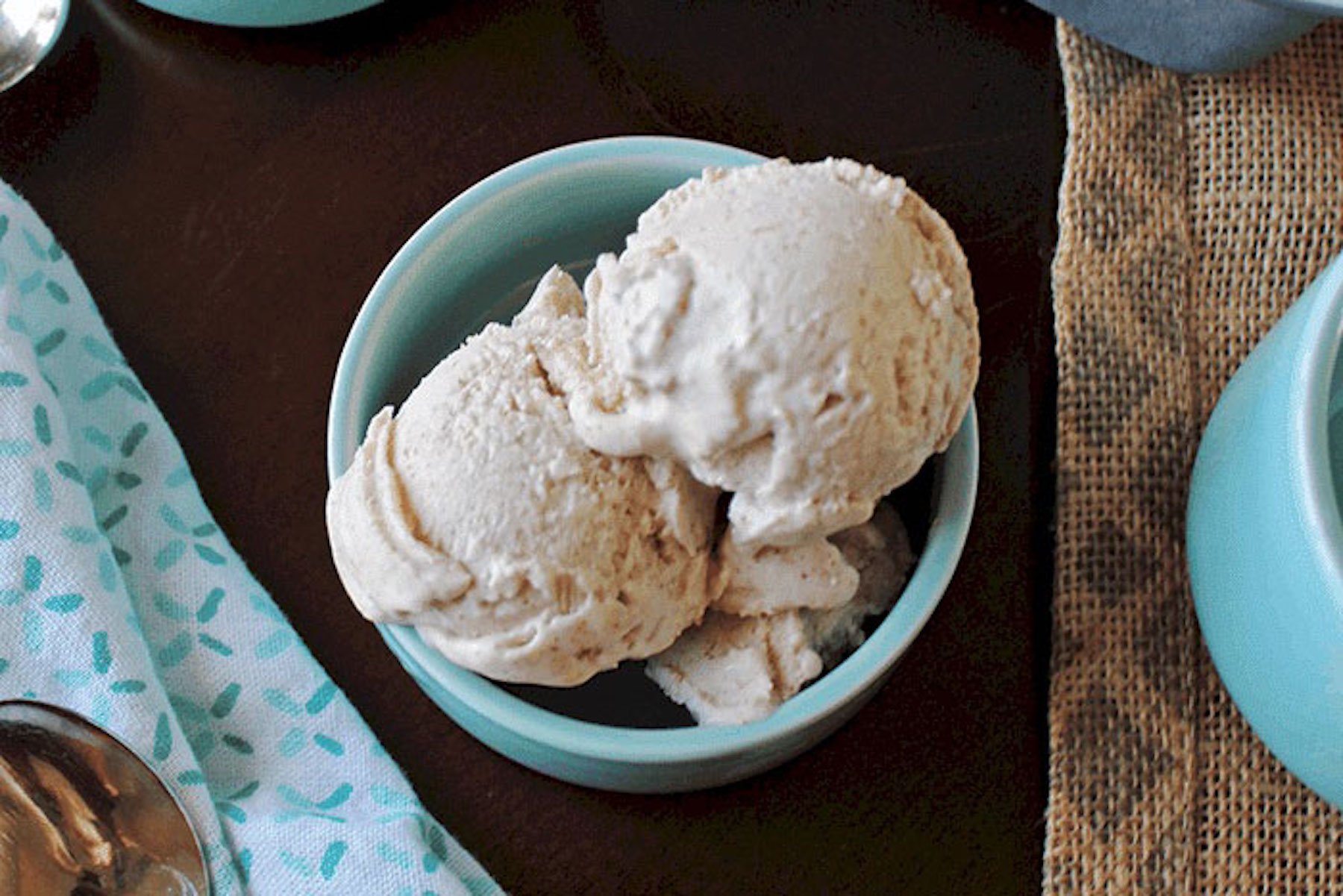Sugar can be difficult to resist, even for the most nutritionally savvy. After all, we’re evolutionarily hardwired to enjoy and seek out sweet flavors. But with ready access to hyperpalatable, processed, sugary foods, regular intake of sweets can compromise a healthy lifestyle.
Sugary foods and refined carbs rapidly break down into glucose in the body, and this causes surges in blood sugar and insulin. Over the long term, high glucose variability can lead to insulin resistance, dysregulated fasting blood sugar, and an increased risk of metabolic diseases. (And while, yes, the body needs a certain amount of glucose to survive, we can get plenty of it from the breakdown of nutrient-dense, whole foods like veggies and fruits.)
An obvious solution is to just cut all added sugar from your diet, but the reality is a lot more complex, due to how ubiquitous sugar is in our foods, the nature of ingrained habits, and our neurological response to the sweet stuff, which is often likened to addiction.
Setting healthy boundaries with sugar and carbohydrates is possible. But willpower and quick-fix cleanses aren’t enough to set you up for long-term success. Below, we’ve tapped the expertise of top nutritionists for practical advice on what to eat, what to avoid, and what proven strategies can successfully reduce sugar in your diet.
What Are the Benefits of Cutting Out Sugar?
There are many perks to limiting sugar consumption. “When we eat processed carbohydrates and excess amounts of sugar, our fasting blood sugar goes up over time,” says Kelly LeVeque, a holistic nutritionist, wellness expert, and celebrity health coach based in Los Angeles. “Unfortunately, as our fasting blood sugar goes up, we have an increased chance of metabolic syndrome, Type 2 diabetes, polycystic ovarian syndrome (PCOS), Alzheimer’s, greater inflammation in the body, and elevations in triglycerides and cholesterol.”
Limiting sugar can curtail these risks and offer other benefits as illustrated in scientific research and clinical cases. These include:
- Less insulin resistance and chronic disease: Chronically elevated blood sugar can lead to chronically elevated insulin, and eventually, your cells become somewhat numb to its effect. This is known as insulin resistance, and it can increase triglycerides, and risk of heart disease, diabetes, fertility issues and Alzheimer’s.
- Easier weight loss and maintenance: Insulin is one of the body’s key anabolic (or storage) hormones, says LeVeque. So when it’s repeatedly elevated due to a high-carb, high-sugar diet, it promotes the conversion of excess glucose to stored fat and also inhibits the burning of stored fat, making it harder to lose weight.
- Better hormonal balance: High levels of insulin “cause an elevation in androgens [male sex hormones] in women, which is associated with PCOS—the number-one cause of female infertility,” says LeVeque. And in men, insulin resistance is associated with lower testosterone levels and increased risk of erectile dysfunction.
- Reduced joint pain: Excessive sugar intake is associated with increased levels of pro-inflammatory cytokines, which drive chronic inflammation and contribute to painful, inflammatory joint conditions such as arthritis.
- More stable mood, focus, and cravings: Crashing after a blood sugar high not only triggers cravings, it can make you irritable, tired, scattered and unable to focus, says LeVeque.
- More restful sleep: Eating a carb-rich meal in the evening can delay your body’s circadian clock and reduce the secretion of melatonin—a hormone that tells your body it’s time to sleep. You’re less insulin sensitive at night to begin with, says LeVeque, so your body has to work even harder to stabilize blood sugar.
- Healthier skin and less acne: High sugar intake is associated with acne, while elevated blood sugar levels are associated with increased collagen glycation (when sugars stick to collagen proteins, causing them to cross-link and get stiff), which can accelerate skin aging.
- Improved cardiovascular and brain health: Glycation of collagen can also stiffen and weaken blood vessels, promoting high blood pressure. Elevated fasting blood sugar and advanced glycation end products (AGEs) (proteins and lipids that have become glycated after exposure to sugar) are also associated with impaired memory.
- Improved mitochondrial function: High sugar intake can overload mitochondria (your cell’s energy producers) and contribute to the generation of free radicals and oxidative stress, which can cause inflammation and a range of chronic diseases.
Learn more:
How to Cut Sugar from Your Diet: The Game Plan
The “ideal” approach to cutting out sugar will vary by individual, but there are a number of methods that are helpful in LeVeque’s work with clients. Here, she offers a roadmap that could serve as a starting point for anyone looking to cut down on or eliminate sugar from their diet.
The foundational tenets of the plan are:
- It’s not just about sugar. Yes, sugary drinks, juices, desserts, and candies tend to cause the sharpest and highest increases in blood glucose, but other sources of carbohydrates—particularly refined grains (breads, crackers, pasta, cereals) that have been stripped of fiber—can rapidly break down into glucose in the body and spike blood sugar.
- Take it slow and steady. In general, LeVeque says people are more likely to fail and experience more unpleasant symptoms when they go from a high baseline level of sugar and carbs to a drastic reduction in overall carbohydrate intake. So, while it’s perfectly fine to go cold turkey on added sugars, refined grains, and potent sources of natural sugars like juice, she doesn’t advise going ultra low carb or eliminating starchier whole-food carbs—at least not right away. Gradually titrating down is often a smarter bet. If life is really hectic, you can even tackle one part of your day at a time, suggests LeVeque. For example, give yourself a week to optimize your morning food intake, which is super important (it can impact your blood sugar for the rest of the day), then focus on your afternoon meals, and finally your evenings.
- In the beginning, swap sugar and processed carbs for more nutritious options. “If you’re coming from a highly processed diet, I always coach clients to lean on light starches such as low-glycemic berries, squashes, even starchy tubers like sweet potatoes to support the transition,” she says. From there, you can further reduce your overall carb intake if desired. Prioritizing protein (you probably need more than you think—over 100 grams a day depending on your weight), fiber (up to 30-50 grams per day is a good goal), and healthy fats is also a must for promoting satiety and balanced blood sugar.
- Maintain these healthy habits long-term, but allow for some flexibility. The goal of this plan is to get off the blood sugar roller coaster that often follows holidays or special events, retrain your palate to require less sweetness to be satisfied, curb cravings, and promote metabolic flexibility—and that requires consistency. But the goal isn’t to never eat a cookie again. Once you’ve established a rhythm with this plan, occasionally reintroducing eliminated foods or dishes (one at a time) is a-okay and can be part of a healthy diet if done with intention.
Of course, if you choose to cut carbs and sugar cold turkey, LeVeque says it’s possible, but she only advises doing so with the help of a nutritionist, group, or partner who can be there for support and to help you troubleshoot symptoms such as low energy and intense cravings.
What to Expect in the Short-term and Long-term When Cutting Out Sugar
After removing added sugars and refined carbohydrates from your diet, you may have several days when you’re tired, irritable, hungry, and have headaches. This is much more likely if you’re a “sugar-burner” and not metabolically flexible, says LeVeque.
Metabolic flexibility is when you can efficiently switch between burning predominantly glucose and predominantly fat as a source of fuel. But if you’ve consistently been spiking your blood sugar with a high-carb, high-sugar diet (even if only over the holiday season) this drives the release of insulin, which inhibits fat burning and hampers metabolic flexibility because your body is mainly burning glucose.
Consuming less sugar and refined carbs is the first step in becoming more metabolically flexible. Once you get over the initial hump, you should start to notice some nice perks. Benefits LeVeque’s clients have experienced within the first several weeks to months include improved energy, fewer cravings, less bloating, less acne, and a decrease in pain and inflammation. And, of course, the longer you can keep up these healthy habits, the more likely they are to translate into long-term benefits like reduced risk of chronic disease.
9 Actionable Steps To Cut Out Sugar, Reset Your Palate, and Support Long-Term Health
Try to follow the tips below for about 4 to 8 weeks, which LeVeque finds is generally sufficient time to establish healthy habits, reset your taste buds, and curb sugar cravings.
1. Eliminate added sugars and “acellular” carbs
After a period of eating sweets and highly processed foods, a worthy goal for just about anyone is to cut out “acellular” carbs for a month or two. These are carbohydrates that have been broken out of their fiber cell and are easy to digest—and therefore more likely to spike blood glucose levels.
These carbs include refined sugars such as table sugar and high-fructose corn syrup, natural sugars and sweeteners such as honey and maple syrup, refined carbohydrates (such as white rice or anything made from flour, like breads, crackers, breakfast cereal, and pasta), and juices—as well as any prepared food containing these individual foods and ingredients.
When you focus on eating whole, minimally processed foods, you naturally avoid most of these ingredients. Of course, whole foods like fresh fruit, beans, and sweet potato still contain carbohydrates and some natural sugars, but generally in lower quantities and often packaged along with fiber, which helps slow their digestion and buffer subsequent blood sugar spikes. So, if consumed in moderation and in the context of an overall nutritious diet, these are less likely to send your blood sugar soaring.
Still, it’s important to keep in mind that sneaky sources of added sugars can pop up in things like frozen vegetables with sauces, frozen meals, salad mixes, condiments (salad dressings, marinades, ketchup, stir-fry sauces), prepared foods from the grocery store hot bar, dried fruits, nut mixes, non-dairy milks, flavored dairy products, and flavored coffee and tea beverages. To avoid unintentionally spiking blood sugar, get acquainted with the various names of added sugars and scan ingredient lists for them:
- Glucose
- Sucrose
- Fructose
- Lactose
- Dextrose
- Maltose
- Malt sugar
- Malt syrup
- Maltodextrin
- Corn syrup
- Cane sugar
- Brown sugar
- Agave nectar
- Coconut sugar
- Honey
- Maple syrup
- Brown rice syrup
- Beet sugar
- Molasses
- Fruit juice concentrates
Should you cut out anything else? Depending on your goals, nixing acellular carbs could be the extent of what you eliminate during your sugar reset—and that’s beneficial, for sure. But if you find yourself using whole-food carbs as a crutch, or you want to take a more significant step toward balancing blood sugar or supporting weight loss, then kick things up a notch. For example, after two weeks of acclimating to a life without acellular carbs, you can cut back on (or eliminate) carbohydrate-dense whole foods such as starchy vegetables, high-sugar fruits, whole grains, and legumes, and instead focus on non-starchy, fiber-rich picks (more on what to eat below). Another option: Only consume these carb-dense whole foods before or after a workout, when they’ll be used to fuel activity or support recovery, suggests LeVeque.
2. Focus on what you can eat (protein, fat, fiber, and the right carbs).
It’s easy to dwell on what you “can’t” or “shouldn’t” eat, but do yourself a favor and put the main focus on what you’re going to eat more of, rather than what you’re going to avoid, suggests Lily Nichols RDN, CDE, a registered dietitian, certified diabetes educator, and author of Real Food for Gestational Diabetes and Real Food for Pregnancy. Overall, you want to formulate your meals and snacks with a variety of nutrient-dense whole foods that together provide protein, fat, and fiber, which can boost satiety, keep blood sugar stable, and reduce cravings for sugar. Here’s how:
- Don’t skimp on protein: Both Nichols and LeVeque place extra emphasis on adequate protein. “One thing I really look for with clients when they’re coming off sugar is suboptimal protein intake,” says LeVeque. “When we have suboptimal protein intake, we have cravings for sugar. Not only is protein the most satisfying macronutrient, but it’s going to support blood sugar balance because it’s digested slowly, and little to none is converted to glucose.” For most people, adequate protein looks like 0.75 g of protein per pound of body weight per day, which translates to around 113 g per day for a 150-pound person. Quality animal protein (such as grass-fed beef, wild salmon, pastured chicken) is a top pick for LeVeque because it’s so nutrient-dense and protein-rich per ounce. But it’s possible to hit your protein quota with plant sources, too. One of LeVeque’s Fab 4 smoothies with protein powder (in this case, a plant-based option like pea protein), fat, fiber, and leafy greens will get you to about 30 grams of protein.
- Switch over to whole-food carbohydrates: While “acellular” carbs are a no go, whole-food carbs are a yes. With these foods, the sugar and starch is wrapped in a fibrous matrix, so your body needs to exert much more effort (via chewing and the action of digestive enzymes) to break them down, minimizing blood sugar impact. Great options include squash, sweet potato, beans, lentils, low-glycemic berries and other blood sugar-friendly fruits such as apples, pears, kiwis, and oranges. While whole-food carbs also encompass things like whole grains (oats, quinoa, and brown rice) and tropical fruits (mango, papaya, pineapple), these are more likely to elicit a blood sugar response and should be eaten in small quantities, if at all. Always pair carbs with a protein and healthy fat to buffer a rise in blood sugar. And if you have one, use your CGM or finger-prick glucose test to help guide consumption of these foods by observing what causes sharp rises for you—our glycemic responses are highly individual.
- Find satisfying replacements for your high-carb faves: Love a good sandwich? Ditch the traditional bread and try one of these sandwich alternatives, like collard or nori wraps. Can’t live without your morning cereal or oatmeal? Opt for a low-carb oatmeal alternative like warm chia, flax, and hemp pudding. Need your soda fix? Try one of these satisfyingly fizzy stand-ins.
- Load up on fiber-rich veggies and plants: Research has shown that people who eat an average of 35 g of fiber per day have better blood sugar markers than people who average 20 g—and better blood sugar control can translate to fewer sugar cravings. That’s one reason Levels experts recommend 30-50g fiber per day. So make sure you’re getting plenty of fiber-rich, non-starchy veggies such as leafy greens, broccoli, cauliflower, cabbage, and any of the plant foods mentioned on this list.
- Focus on quality fat sources: The wrong fats (vegetable oil, soybean oil, corn oil) may cause inflammation and insulin resistance. Always opt for high-quality cooking oils and fats (olive oil, avocado oil, butter, ghee, coconut oil), and embrace nutrient-dense whole-food sources of fats such as avocado, nuts, seeds, and fatty fish.
3. Pay special attention to your mornings.
What and when you eat in the morning has the potential to drive or curb cravings. “When I’m trying to lower someone’s fasting blood sugar, I always start by attacking the first third of the day and making sure they break their fast with a blood sugar-balancing meal,” says LeVeque. This prevents a blood sugar crash and subsequent low energy, cravings, and overeating. These types of breakfasts include an egg scramble with avocado, veggies, and sausage; a tofu and veggie scramble; chia pudding with protein powder; Greek yogurt with nuts and berries; or a chocolate almond butter crunch smoothie.
And don’t wait too long to eat in the morning. While many intermittent fasting or time-restricted feeding protocols may have you hold off on your first meal until noon, that doesn’t work for everyone’s body, says LeVeque. For some, waiting might contribute to low blood sugar, cravings, and overeating later. For best results, experiment with breaking your fast at different times (for instance, one to four hours after waking) and see what feels best. Or consider shifting your fasting window to the evening: “Fasting is a phenomenal way to lower fasting blood sugar and increase insulin sensitivity over time, and I have two to three times more success with my clients when they stop eating at 5 or 6 p.m.,” says LeVeque.
4. Keep flavors interesting and meal prep simple.
When you’re used to sugary, hyperpalatable processed foods, scaling back on your added sugar intake can feel boring and hard to sustain. So you need to find a way to tantalize your taste buds for healthy eating with minimal effort. “If it’s not fun and delicious, you’re going to get bored, but this is also not the time to spend six hours meal-prepping on the weekend,” says LeVeque. Instead, do what she calls meal prep light:
- Make a large piece of protein or some easy-to-grab options—a nice piece of salmon, chicken thighs or tenders, hard boiled eggs, and grain-free meatballs are all great.
- Rinse and chop vegetables so they’re easier to use throughout the week, whether that’s for a roasting tray, crudites, or for topping a salad.
- Use frozen veggies, too. LeVeque’s pro tip: Spread frozen broccoli and cauliflower florets on a sheet pan and heat them in the oven for 10 minutes to evaporate the water; then toss them in oil, season, and pop them back in the oven. They’ll taste fresh roasted.
- Make one or two delicious dressings or dips per week—garlic tahini, chimichurri, red pepper hummus, cilantro pesto—to slather on eggs, vegetables, salads, and proteins to instantly up their flavor factor.
When you sit down to eat, add some texture and crunch (plus a dose of fiber and healthy fats) by sprinkling on chia seeds, basil seeds, pumpkin seeds, or walnuts on your meals.
5. Use certain sweeteners as desired.
You can use natural non-caloric sweeteners like monk fruit and stevia to ease the transition as you scale back on sugar. Just do so mindfully, and gradually reduce the quantity so you can curb your compulsion for sweet flavors.
“My preference is for monk fruit because it tastes a bit more like sugar than stevia does,” says LeVeque, adding that these sweeteners should be used sparingly, one to two times a day. This might mean using them in your morning coffee or tea, or consuming them in the form of a monk fruit-sweetened chocolate like Evolved Keto Cups or a stevia-sweetened soda like Zevia.
Avoid artificial sweeteners, which have been linked to metabolic consequences. And be cautious with sugar alcohols, a type of carb used as a low-calorie sweetener, as they may be detrimental to the gut microbiome or cause gastrointestinal issues.
6. Prioritize sleep to boost results.
You may have an easier time keeping a sweet tooth in check and blood sugar balanced if you’re well rested, so aim for 7-9 hours of quality shut-eye per night. In one study, participants experienced increased hunger, sleepiness, and food cravings after a night of partial sleep deprivation compared to a night of optimal sleep. They also consumed more chocolate and selected larger portion sizes for lunch the following day, suggesting that inadequate shut-eye can promote consumption of sugary foods. One potential mechanism: Inadequate sleep may lead to elevated levels of ghrelin, a hunger hormone that can increase a person’s preference for sweet and fatty foods. What’s more, another study found that a single night of poor sleep can result in insulin sensitivity the next day that’s the same as someone with metabolic syndrome. Meaning, after one night of bad sleep, it’s harder to keep blood sugar in a healthy range.
“I’ve had clients with insulin resistance and trouble losing weight who have seen massive improvements in inflammation, cravings, and body composition just by changing their sleep,” LeVeque says. So if you can finish dinner early and be asleep by 9 or 10 p.m., do it.
7. Troubleshoot cravings, headaches, and other sugar withdrawal symptoms.
If you feel pretty crappy when you cut out sugar and refined carbs, consider these strategies (in addition to prioritizing sleep):
- Replace electrolytes: “As you eat fewer sweets and your insulin levels go down, you may be losing more sodium and minerals in your urine—and this can leave you tired, with headaches, or muscle cramps,” explains Nichols. Insulin normally acts on the kidneys to promote sodium reabsorption, so if insulin levels are low, more sodium will be excreted, which can alter levels of other electrolytes. To avoid this, she suggests seasoning your food with salt, getting minerals via protein-rich foods and fresh produce, or considering a sugar-free electrolyte powder such as LMNT.
- Try MCTs or exogenous ketones: As mentioned above, if someone goes cold turkey and cuts way back on their overall carb intake, but they’re not yet metabolically flexible (i.e. they’re still a sugar burner and not able to efficiently switch between burning glucose and fat), they may experience fatigue, irritability, increased hunger, and headaches. In these cases, LeVeque sometimes recommends using MCT oil or beta-hydroxybutyrate in the morning before workouts. “If you’re not creating ketones [a fuel made from the breakdown of fats] readily in the body because you’re not yet a fat burner, these can act as a bridge and get you there faster,” she says. “MCT oil is the easiest food source to be converted to ketones, and beta-hydroxybutyrate is already a ketone.”
- Embrace ACV and fermented vegetables: Try snacking on pickles, adding fermented veggies like sauerkraut to your next salad, scramble, or sweet potato, or sipping on diluted apple cider vinegar before meals. When consumed before or with a meal, the organic acids in these foods can help reduce post-meal blood sugar spikes and increase feelings of satiety—which might help curb your desire to reach for something sweet.
8. Use a CGM to optimize health benefits while gaining flexibility.
All of the benefits of a plan like this can be enhanced even further when you use a CGM to guide your choices. For example, different people can have highly variable glucose responses to the same food; a CGM can tell you what is more or less likely to spike your blood sugar. This insight can help you avoid your personal top offenders, or it might reveal that you can be a bit more flexible with certain foods than you thought.
Learn more:
9. If you want to reintroduce an eliminated food, do it with intention.
After about four to eight weeks of lower sugar and carb intake, you should be feeling pretty good, with fewer symptoms and cravings, and greater ease making healthy choices around food. And while you can keep up this way of eating for the long-term, it’s also okay if you occasionally consume some of the foods you’ve eliminated. Say, once a week or on a special occasion—whatever frequency works for your goals and doesn’t lead to a loss of control or put you back on a blood sugar rollercoaster.
Just be sure to eat these foods in a mixed macronutrient setting, advises LeVeque. In other words, have these foods one at a time and with a meal. That could mean having half a slice of whole grain toast with your scrambled eggs, avocado, and vegetables; enjoying a serving of pasta with a veggie-loaded bolognese; or savoring a small homemade cookie or brownie within 5 to 10 minutes of a meal and just before a walk.
 Interested in using a CGM to help cut your sugar intake?
Interested in using a CGM to help cut your sugar intake?
Members of Levels, the health tech company behind this blog, get access to the latest CGMs, delivered directly to their door. Using that CGM data, the Levels app can show you which foods impact your blood sugar the most, and give you personalized guidance to build healthy, sustainable habits. Click here to learn more about Levels.



 Interested in using a CGM to help cut your sugar intake?
Interested in using a CGM to help cut your sugar intake?






